Hello World,
Here we go again !
Important Note :
If you are running Ubuntu 13.10, please review this link to install xrdp and have it working.
In this post, we will explain how to install xrdp software on your ubuntu 13.04. If you follow us, you know that you can use the xrdp pacakge in order to perform remote desktop connection from a windows box using the default remote desktop client available within Windows Operating System. Be aware that xRDP software solution does not support Unity Desktop interface. You will be able to connect to your ubuntu computer but you will need to configure a “working” desktop interface.
We have described the process for previous versions. You can find the posts describing the process hereafter :
- Ubuntu 12.10 – How to remote desktop to Ubuntu 12.10
- Ubuntu 12.04 – How to remote desktop to Ubuntu 12.04
You will see that the process has not changed dramatically. So, Let’s go !
Installing XRDP packages
Usually, you would use the Ubuntu Software Center to locate and install the XRDP Package. In Ubuntu 13.04 (the version I’m currently using), the package does not seems to be present yet. The package might be included later through updates.
Click on Picture for better Resolution
In the mean time, we will perform the installation using the command line. To install the xrdp package, you will type the following command in the Terminal
sudo apt-get install xrdp
You will be prompted to confirm the installation. Press Y.
Click on Picture for better Resolution
Wait for the process to complete.
At this stage, you should be able to perform a remote desktop connection to your Ubuntu 13.04 machine. However, you will see only an empty desktop with no icons and no menu. This is an expected behavior since Unity Desktop interface is not supported and since you didn’t configure any alternate desktop interface.
Click on picture for better resolution
Install & Configure Gnome-fallback desktop
In order to have a usable desktop interface, we will need to install an alternate desktop. In our scenario, we will install the gnome-fallback desktop interface. To perform the installation, we will simply use the Ubuntu Software Center. In the search box, we ‘ve typed gnome-session. In the result page, you will see the gnome Session manager – Gnome fallback session.
Click on the install button and wait for the process to complete
Click on Picture for better Resolution
At this stage, you will need to create an additional configuration file by issuing the following command from the terminal
echo "gnome-session --session=gnome-fallback" > ~/.xsession
Click on Picture for better Resolution
If you try now to perform a remote desktop from windows, you should be prompted for credentials.
click on picture for better resolution
If the credentials are valid, you will be then able to access the gnome-session-fallback desktop and start working. Note that the gear button is not working in this remote desktop session.
Click on picture for better resolution
Keyboard Layout
If you are using a different keyboard layout than US, you will need to perform an additional configuration in order to have to correct keyboard layout mapped in your remote desktop session. You will need to run the following command from a terminal session
Step 1 : You go to the /etc/xrdp directory (cd /etc/xrdp)
Step 2 : you issue the command setxkbmap -layout <%your layout%> to define which keyboard map/layout to use (in my case, setxkbmap be for belgium layout)
Step 3 : create a copy of the km-4090.ini file into the same directory. It seems that this is the default file used by xrdp to define the keyboard layout. You will need to use sudo in order to be able to write into the directory
Step 4 : Check that you have a backup of your file by typing the dir or ls command
Step 5 : update the file by issuing the following command sudo xrdp-genkeymap km-080c.ini (where km-080c.ini is the file needed for Belgian keyboard)
Click on Picture for better Resolution
After that, you should restart the xrdp service by issuing the following command
sudo service xrdp restart
At this stage, you will have a working keyboard within your xrdp remote session. You will have access to the main keys. However, you might notice that “special” keys like arrows, Euro symbol,@,… are not working as expected. If you are lucky, you can use existing km-xxxx.ini file that would fix this issue (see http://c-nergy.be/blog/?p=3858). If you are not lucky, you will need to generate your own file and fix your issues. Again, you can have a look at http://c-nergy.be/blog/?p=3858 which will explain how you could try to fix this issue. The manual process can be time consuming.
Final Notes
That’s it for this post ! This is a wrap up of previous posts we already published related to xrdp. Using this approach, user will be able to connect to Ubuntu machines using the standard remote desktop. The only remaining issue with these instructions and this setup is that if a user disconnect from remote desktop session and tries to reconnect, a new session will be created. You will not reconnected to the existing session. In the next post, we will show you how to overcome this limitation.
Till Next Time
See ya
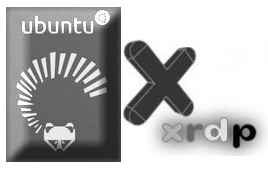
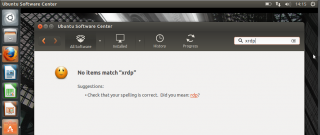
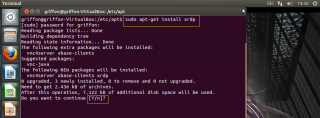
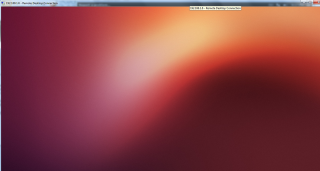
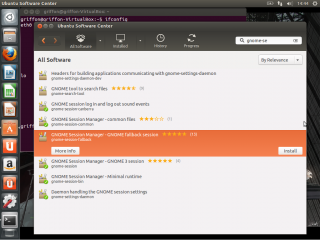
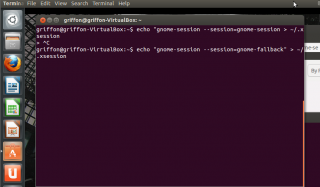
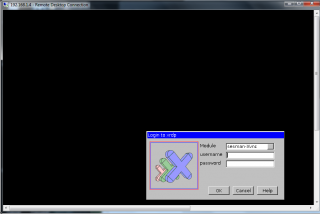
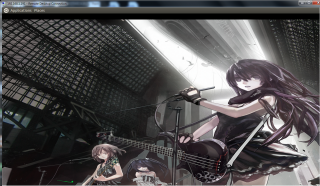
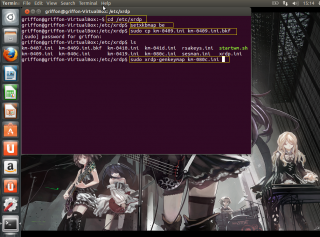
simply doesn’t work in Zorin 6.
I still get a blank screen it is just less quality image.
Hello Tim,
Thank for the info.
I’ve never used Zorin so I cannot tell and I’ll not look for a workaround because no time
Till next time
See ya
hi Griffon,
thanks a lot. it works using ubuntu 13….
save a lot my time….
Hi Griffon
“At this stage, you should be able to perform a remote desktop connection to your Ubuntu 13.04 machine. However, you will see only an empty desktop with no icons and no menu”
I’m trying this on 13.10 (connecting from Windows 7), and I don’t even get that far. After connecting, I get a cross-hatched screen with a big black X for a cursor: https://lh6.googleusercontent.com/-seN2ONh44GU/UmOYpUid7jI/AAAAAAAAC0s/AhRKBLljrxM/s800/rdp.png
Have I missed something?
Hello There,
No, you didn’t miss anything… I’ve tried as well to install xrdp using the ubuntu package and using the procedure to use the xrdp binaries from freerdp/xrdp site. Installation went through no problem but indeed the xrdp functionality is not working……in ubuntu 13.10
haven’t got to look at it….but this can be anyoning….if this stay like this…we might want to fill in a bug for xrdp and ubuntu 13.10
We will perform some additional tests and see what will come up…
Til next time
See ya
Hello VectorSpace,
We have performed some tests and it seems that the gnome desktop fallback solution is not working anymore (not even with vnc clients). We have found a workaround. We will publish a quick post about that this weekend
Stay tuned
See ya
Looking forward to your solution to 13.10 this weekend. Will we still be able to maintain the same session?
echo “gnome-session –session=gnome-fallback” > ~/.xsession
now
echo “gnome-session –session=gnome” > ~/.xsession
hello,
I didn’t test the gnome-session=gnome but I have tested, validated and installed xrdp using the gnome-session=gnome-fallback… and it’s working
Till next time
see ya
on my 13.10 the solution with
echo “gnome-session –session=gnome” > ~/.xsession
dont work.
also echo “gnome-session –session=gnome-fallback” > ~/.xsession is not working.
Hello There,
Please review the following link http://c-nergy.be/blog/?p=4448. This explain how to use xrdp software with Ubunt 13.10. The gnome-fallback session is not working anymore in ubuntu 13.10
Hope this help
Till Next Time
See ya
Great post, this was the easiest out of all the other ones that i found and it worked on the first try, thanks again!!!
I did not look at the details on the other posting. there were just too many.
Would you please comment ..
1. gnome – that seems to be a ubuntu problem, but will they fix it?
2. xrdp dropping the session when remote desktop disconnects.
.. is this something we can try and push Ubuntu to fix?
.. you have a time consuming work around, which may not be allowed everywhere.
Thanks for consideration.
Hello Steve;
To answer your question 1 : So far, Ubuntu has (and might) not fix the gnome package…
Question 2 – If you mean that each time you reconnect to your remote Linux machine, you get a new session, yes you can fix this by following the instructions described here
http://c-nergy.be/blog/?p=4168
http://c-nergy.be/blog/?p=4242
Using this technic, you will be able to reconnect to an existing session. This is a manual operation indeed but you can script it (You have all the necessary command line published and file to be replaced)
Another option would be to use the script-o-matic script (see http://c-nergy.be/blog/?p=3541) which might allow you to minimize the time to implement this solution.
I have checked that indeed xrdp and other distribution (using gnome 3.x for example are working…. so you are right, it’s more a Ubuntu issue and we should find a way to have the unity desktop supported when remoting with xrdp.
Or xrdp team should provide a working version with unity or somebody else….the software is open source 🙂
Hope this help
Till next time
See ya